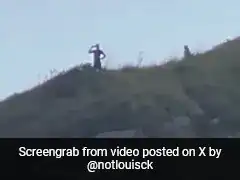A huge city hidden by the luxuriant vegetation of the Amazon rainforest has been discovered in Ecuador. According to the BBC, the houses and plazas in the ancient city in Upano valley were connected by a network of roads and canals. The area lies in the shadow of a volcano that created rich local soils, the outlet further said. The discovery was made using LiDAR, a popular remote sensing method that uses light to measure distances and is also known as laser scanning or 3D scanning.
"This is older than any other site we know in the Amazon. We have a Eurocentric view of civilisation, but this shows we have to change our idea about what is culture and civilisation," Prof Stephen Rostain, director of investigation at the National Centre for Scientific Research in France, who led the research, told the BBC.
"It changes the way we see Amazonian cultures. Most people picture small groups, probably naked, living in huts and clearing land - this shows ancient people lived in complicated urban societies," Antoine Dorison, a co-author of the study, said.
New Scientist said the city is between 3,000 and 1,500 years old - older than other pre-Columbian ones discovered in the Amazon. It also said that people lived there for up to 1,000 years.
Though the LiDAR survey was carried out in 2015, the results were published recently. It revealed more than 6,000 raised earthen platforms within an area of 300 square kilometres.
The report said these are where wooden buildings once stood and excavations have revealed post holes and fireplaces on these structures.
Disclaimer: The copyright of this article belongs to the original author. Reposting this article is solely for the purpose of information dissemination and does not constitute any investment advice. If there is any infringement, please contact us immediately. We will make corrections or deletions as necessary. Thank you.







